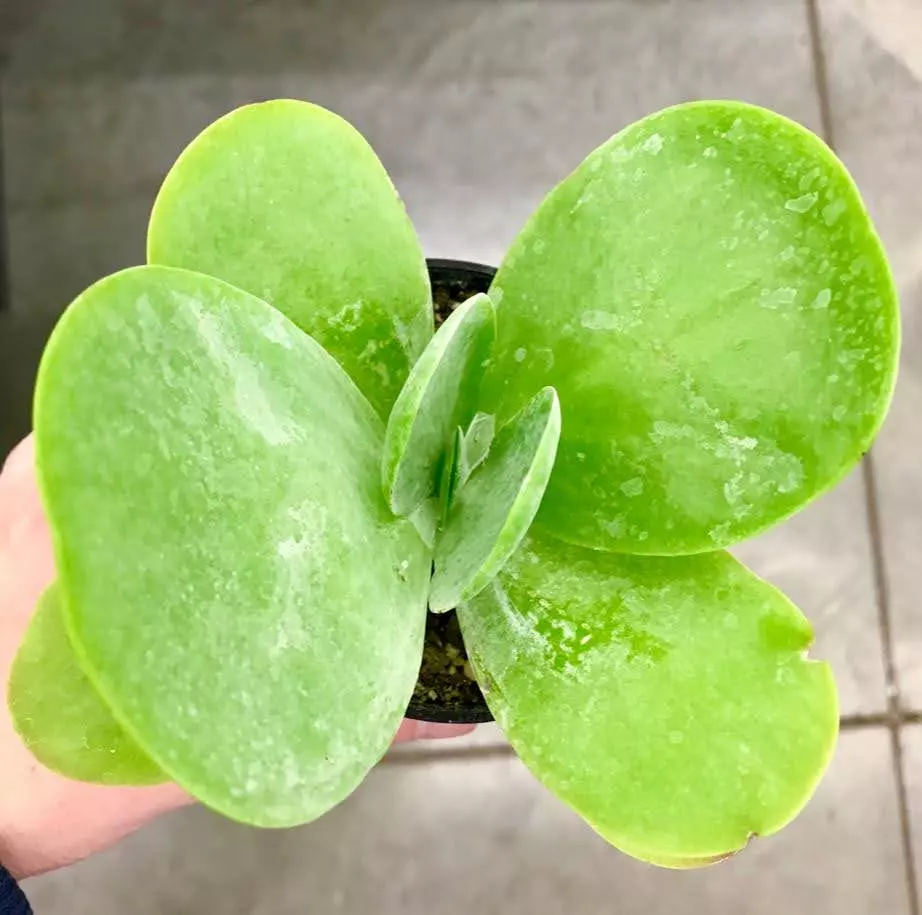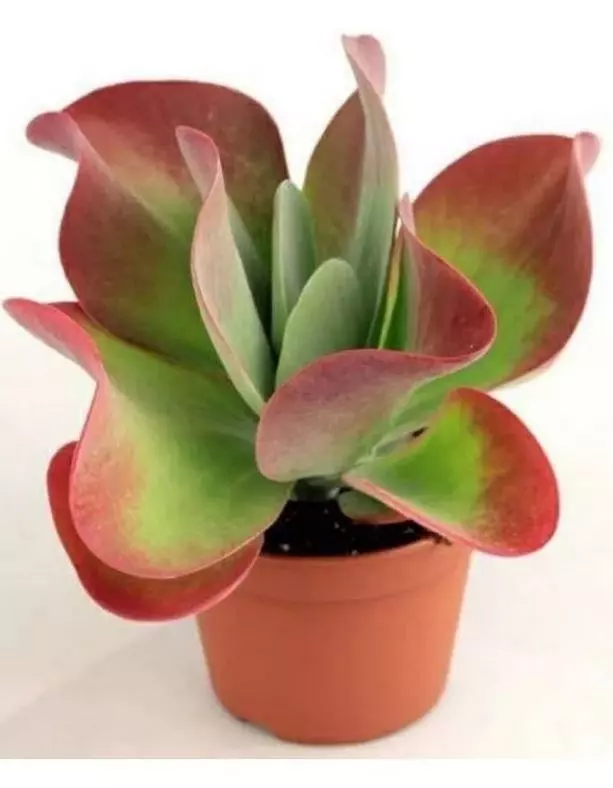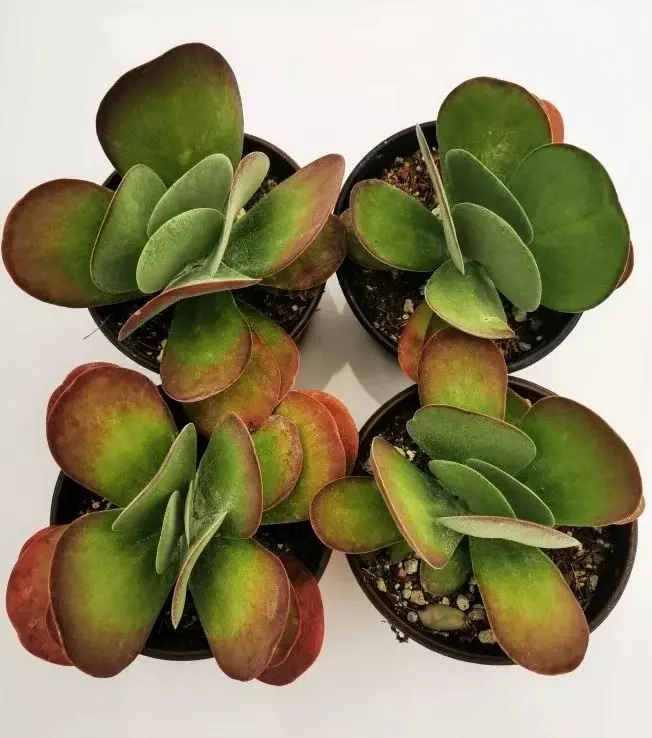Kalanchoe luciae is a simple to care for the succulent plant with very attractive leaves. Learn all about how to care for a Kalanchoe luciae in this article.
Table of Contents
Classification of Kalanchoe luciae
Family: Crassulaceae
Subfamily: Sedoideae
Tribe: Kalanchoeae
Genus: Kalanchoe
Characteristics of Kalanchoe luciae
Kalanchoe luciae is a succulent plant native to Mozambique, Zimbabwe, and South Africa.
The plant can reach more than 24″ (60 cm) in height.
Its leaves are flat, rounded, and can reach 6″ (15 cm) long. They are pale green with red margins during cold seasons. Occasionally, if the temperature drops too low, the leaves may turn completely red.
The plant is usually confused with Kalanchoe thyrsiflora.

The Flowers of Kalanchoe luciae
Flowering gives rise to clusters of cream-colored flowers. Note that it is a monocarpic plant, that is, it dies after flowering.
How to Care for a Kalanchoe luciae
Kalanchoe plants are famous for their easy care, highly recommended for indoors.
Keep in mind that most Kalanchoe plants are toxic to humans and animals.
In general, they tolerate hot, dry climates well. Even direct sun, although with caution as it can burn the leaves.
Be careful with humidity. It is important to use a well-drained substrate to prevent the plant from waterlogging and rotting.

Care Kalanchoe luciae:
Watering Kalanchoe
Abundant but infrequent watering. The substrate should always dry before watering again. In winter limit watering to a minimum.
Temperature for Kalanchoe
Does not tolerate well temperatures below 50°F (10 ºC).
How to Care for a Kalanchoe: Soil
It needs good drainage to avoid humidity.
Light
It needs a lot of light. It tolerates direct sun with caution.
How to Propagate Kalanchoe Plant
Plants of the genus Kalanchoe reproduce very easily through a leaf or stem cuttings.
If we decide on cuttings, the ideal is to cut a leaf or stem using a sharp knife. Be careful with the rest of the leaves because they come off easily.
Once we have the cutting, we must let it dry until a callus forms in the cut area. In this way, we prevent it from absorbing excess moisture in the first weeks.
Once we have the callus, we plant it in the recommended substrate, and in a few weeks, we will begin to see activity.
Keep in mind that it is a slow-growing plant.

